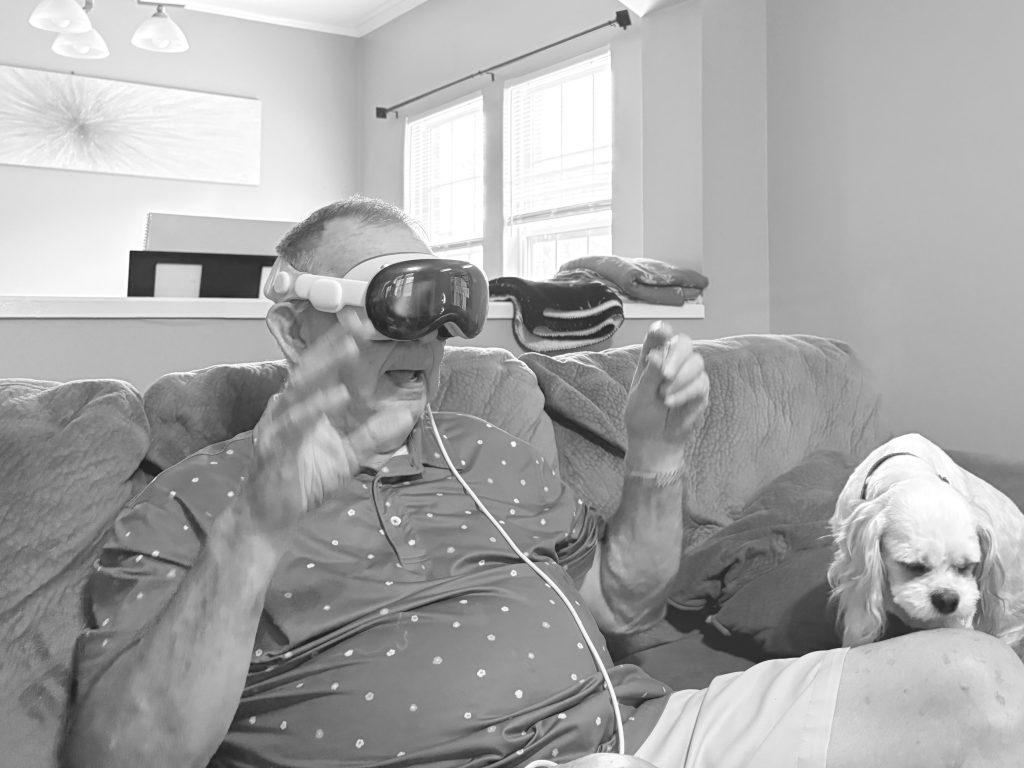
Apple Vision Pro is a surprisingly emotional computer. If Apple Watch is Apple’s most personal device, Apple Vision Pro is the company’s most intimate.
My take on Apple Vision Pro after a month of regular use is that it’s the ultimate nostalgia machine, a portable movie theater, and a Macintosh-caliber personal computer. In this piece, I want to focus on the nostalgia component and how profound it can be.
Apple Vision Pro is an awesome movie screen. That’s true whether you’re watching a feature-length film or the latest episode of your favorite series. It’s also true for just browsing your photo library and watching your home videos on a life-size screen.
I don’t find myself rewatching videos shot on my iPhone on my living room TV, but it’s a go-to activity on Apple Vision Pro that brings me much joy. Jump into an immersive environment (the Moon at night is my favorite for focus) and feel like you’re back in the room with your family and friends or back at that concert from last summer. All this while my son is asleep next to me.
Then come the waterworks. Apple Vision Pro has been great for viewing giant panoramic photos or flipping through your photo library like you’re walking around life-size prints. Spatial videos and photos captured on iPhone or Apple Vision Pro are neat. However, it’s a visionOS 2 feature that makes Apple Vision Pro wow me.
Top comment by Indeed
I had a very similar experience while going through my photos and spatializing some old ones of my son when he was little. One of my favorite pics of him when he was about 4 and I saw that spatialized pic, then compared it in my mind to his senior pics that just came out a couple days before and this grown man was staring back who came from that little guy and I just lost it. It was such an amazing experience for me and I owe it all to Apple and their engineers for that.
visionOS 2 introduces the ability to spatialize traditionally flat photos. My photo library includes dozens of snapshots from childhood. Adding layers of perceptible depth to photos of my late grandmother or my college friends from years ago profoundly moved me.
I felt like I was transported back to 1995 and 2010. I was standing right in front of lost loved ones again. I felt sadness that they were ghosts lost to time. I felt love like when we were together. I felt a part of me heal. I know I miss these people, and I know I feel sadness that they’re gone. Now I’m learning again how happy they made me through this vivid memory. That helps me understand why missing them can hurt so badly.
This experience makes you take account of everyone you love in your life now. My kids who weren’t born when those memories were captured. New friends I had yet to meet when I was younger. And for the friends and family who I can still reconnect with. Seriously, huge kudos to everyone who played in a role in making it possible to spatialize existing photos in visionOS 2.
I had to share this visceral experience with someone else. My son’s great grandfather lost his wife over the summer after 50 years of marriage. I used the spatial effect in visionOS 2 on photos of our visits with them from the past decade, then created an album of those photos for him to view. “There she is,” he said as he reached his arm out to her.

FTC: We use income earning auto affiliate links. More.

Comments